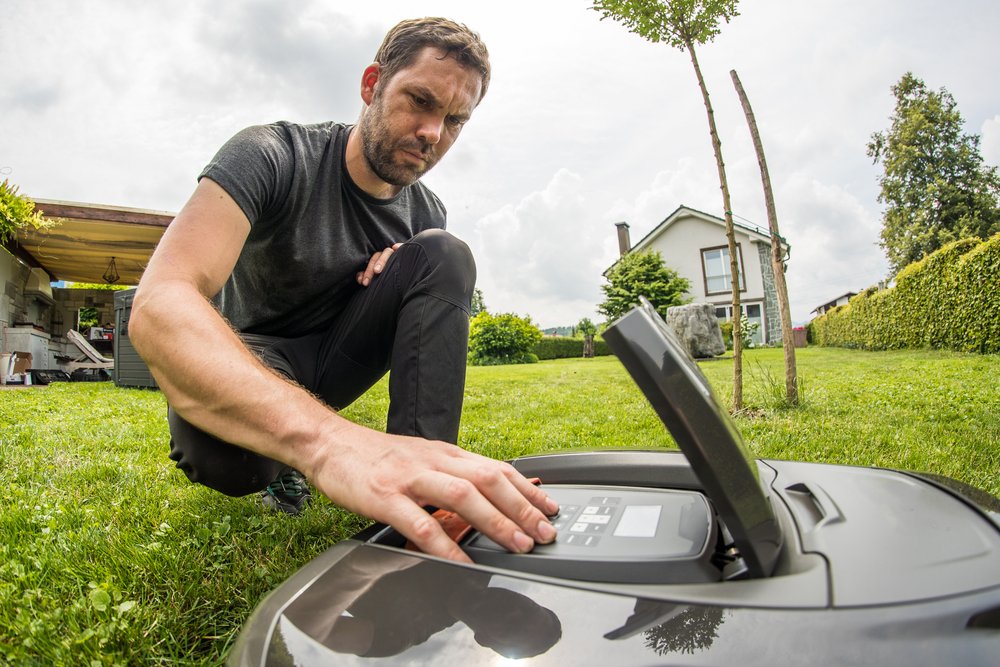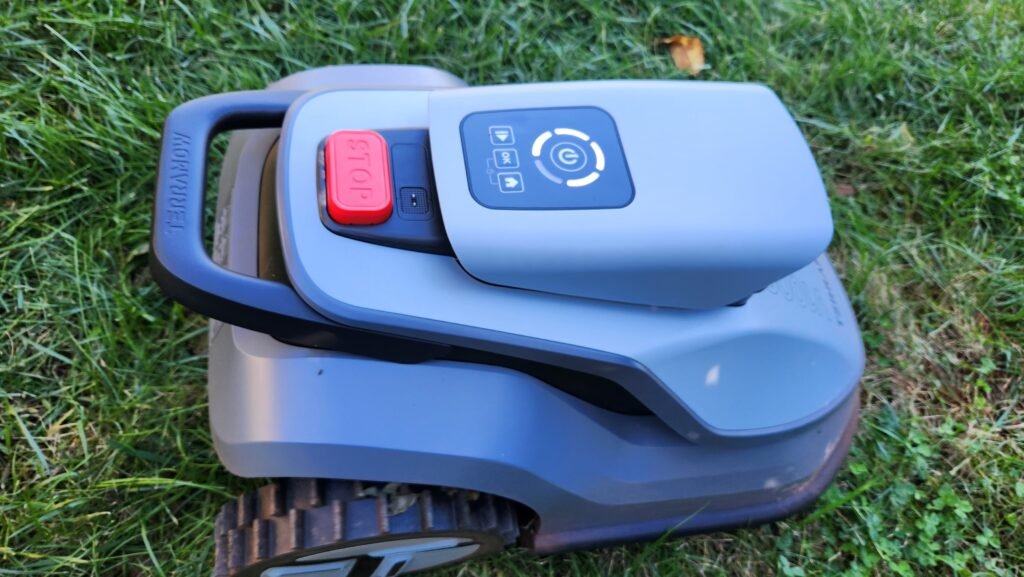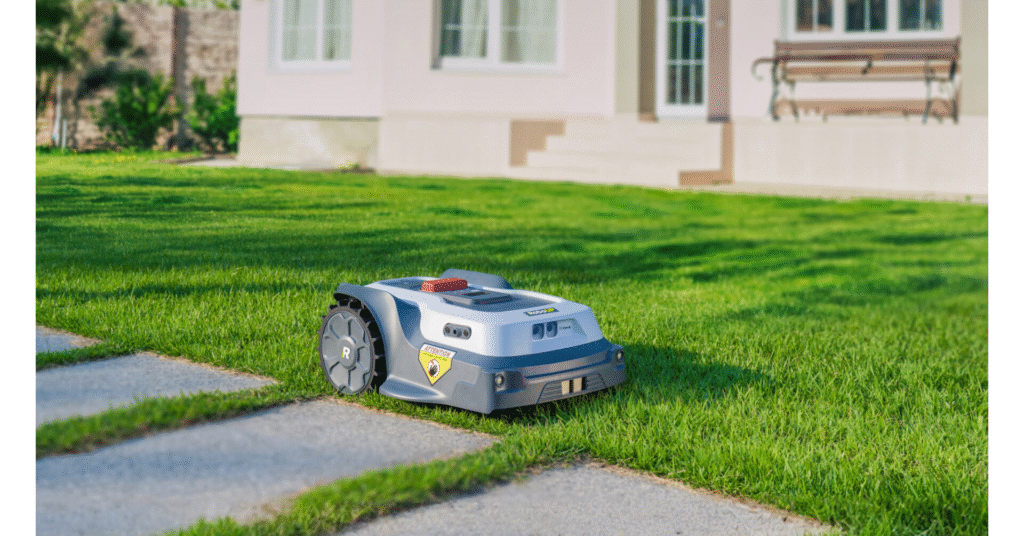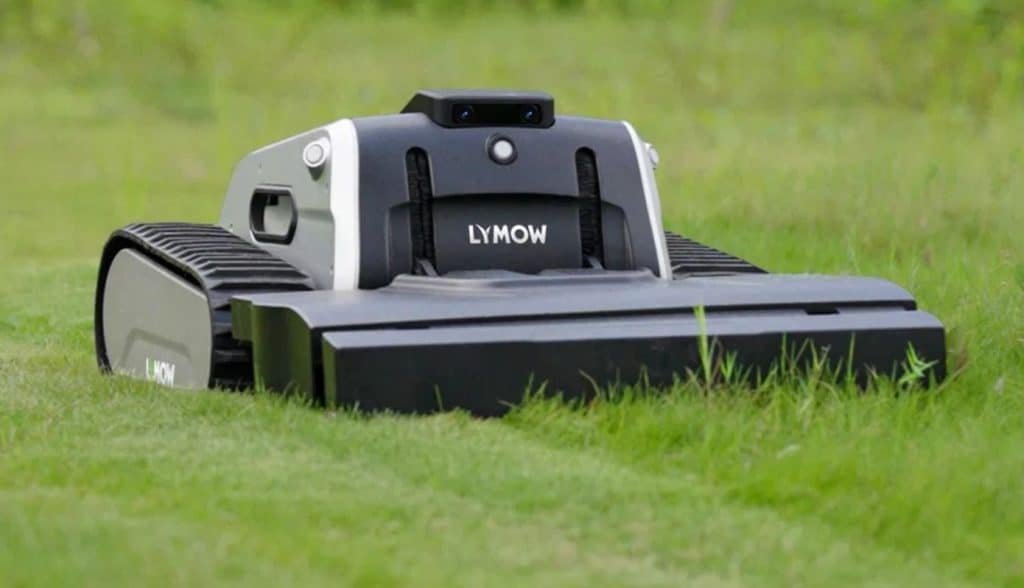Robot mowers have advanced faster than many people likely anticipated. What started out as somewhat of a gimmick has now turned into a high-tech race among some of the biggest brands in lawn and garden equipment.
But it’s not just the big robot brands going at it. Many small robot mower startups have launched on Kickstarter, raising millions of dollars in the process.
What many of these companies are chasing is essentially the perfect robot mower navigation system. A system that allows a user to unbox the mower and simply set it down on the lawn with minimal input or setup.
To achieve this, a mix of several technologies have been used, each with varying degrees of success.
Below, we’ll dive into how robot mower navigation systems work and the pros and cons of each one. This should help you be a more informed shopper and find the right system for your particular lawn.
The Perimeter Guide Wire
This is the old standard when it comes to robot mowers. It was the first system used and it is still used today by many models.
One misconception about the guide wire is that it has to be “buried” in your lawn. While the term “bury” is used when describing perimeter wire installation, it really just means burying it in the grass.
A majority of home perimeter guide wires are simply laid in the grass. Then, the supplied anchors are used to hold it down. These anchors essentially look like oversize staples.
Over time, the small wire sinks deep into the grass and is covered by a small layer of dirt, debris, and clippings. It essentially disappears into the grass.
The advantage of the guide wire system is that once set up, it works flawlessly every time. There is very little to malfunction as the area to be cut is clearly defined and the mower never deviates from these boundaries.
The downside of course is you have to spend the time laying down the guide wire. For some homeowners, they will enjoy this “hands-on” DIY task. But others may find it tedious.
Laying the guide wire also takes some careful planning as certain precautions need to be taken. For example, you must keep bends below 45 degrees. You also have to take into consideration any slopes and angle the guide wire to ensure the mower has traction as it turns near the guide wire.
Most robot mowers that use a guide wire also have some sort of onboard sensor to detect obstacles. The lower-priced mowers will generally use ultrasonic sensors or pressure-sensitive bumpers. More advanced mowers may use “vision” based sensors for more advanced detection.
Overall, the guide wire systems offer the most reliable mowing, especially in complex lawn layouts. The downside is that they do take the most time to set up and many of the mowers will not mow in a straight line and instead follow a random pattern within the guide wire boundaries.

GPS and RTK Systems
For those homeowners who don’t want to be bothered by installing a guide wire, there are robot mowers that navigate based on a GPS/RTK system.
To explain those acronyms, the GPS portion stands for the familiar Global Positioning System. You’re likely very familiar with this if you’ve ever used Google Maps on your phone or while driving.
Robot mowers essentially use the same system. But of course, it’s not nearly accurate enough to cleanly cut to the borders of your lawn each time.
This is where RTK comes into play. RTK stands for Real-time Kinematics and it’s essentially a signal that emits from cellular towers. Combining the GPS signal with the signal from cellular towers allows for accuracy to be within centimeters.
So far, this probably sounds perfect – and when it all works, it is rather impressive. However, it does require a perfect signal from a cellular tower somewhere nearby. By perfect signal, we generally mean a nearly direct line of sight.
For some lawns, this may not be a problem. However, many lawns have obstacles, structures, or elevation changes that block the RTK signal. When this happens, the mower loses its accuracy and tends to run off course.
Additionally, GPS/RTK systems require that base antennas be used. These are something like a relay station and they generally have to be placed in a central location around the lawn. While not terribly unsightly, they do create a cosmetic issue that some homeowners don’t like.
Setting up a GPS/RTK mower is relatively easy compared to a guide wire setup. In most cases, the user pairs an app on their phone with the mower and then remotely “drives” the mower around the borders of their lawn. The mower then combines this route data with GPS/RTK signals to complete the navigation.
These mowers also tend to have more advanced real-time sensors to detect obstacles or deal with a loss of signal or pathing information.
Overall, these systems can work remarkably well. But the downside is they require a clear signal at all times and some lawns may just not be appropriate.
Vision-Based Systems
Next up are what promise to be the future of robot mowers. These are purely vision-based and they work much like autonomous vehicles you may have seen being tested in large metropolitan areas.
These 100% vision-based systems don’t use a guide wire and they don’t 100% rely on GPS or RTK. Although, they can use these technologies as a backup in some cases.
Instead, they use computer vision technology that constantly monitors the environment using either cameras or lasers. The mower then uses its onboard computer to turn all of this information into a virtual recreation of your lawn and all obstacles.
With most of these systems, you still have to pair them with an app and drive them around your lawn to set up the initial mowing zones. But if all goes right, after that you simply let it mow.
These are the most impressive robot mowers but generally also the most costly. Also, the systems are not perfect and the mowers do occasionally get lost or wander. When this happens, they generally just stop and alert the user via the app.
Overall, this is the newest technology of them all and shows the most promise. In the right setting, they can work so well that it’s very impressive and takes almost no time to set up. However, with some lawns with lots of different zones or obstacles, they can get overwhelmed and end up stopping often, which requires the user to intervene.
LiDAR SLAM Mower Technology
LiDAR SLAM is a new type of vision navigation technology and is making its way into the latest robot mowers.
LiDAR SLAM technology combines two technologies. The first is LiDAR, which stands for Light Detection and Ranging.
The next is SLAM, which stands for Simultaneous Localization and Mapping. These two technologies are combined to create an advanced navigation technology that requires no guide wire or outside signals.
It works by using a laser emitted by the mower. This laser illuminates the environment around the mower. The laser is reflected back to the mower’s sensors and onboard computers calculate the time it takes for the laser light to return.
The SLAM system then uses this laser data to create a real-time 3D map of the area around the mower. All of this is done on the fly and the information and 3D map are constantly updated as the mower moves about.
LiDAR SLAM technology is believed to be superior to camera-based vision systems in mowers. Being LiDAR-based, these systems work in different lighting conditions and can also react faster to changes in the environment.
How To Choose The Right Robot Mower Navigation System
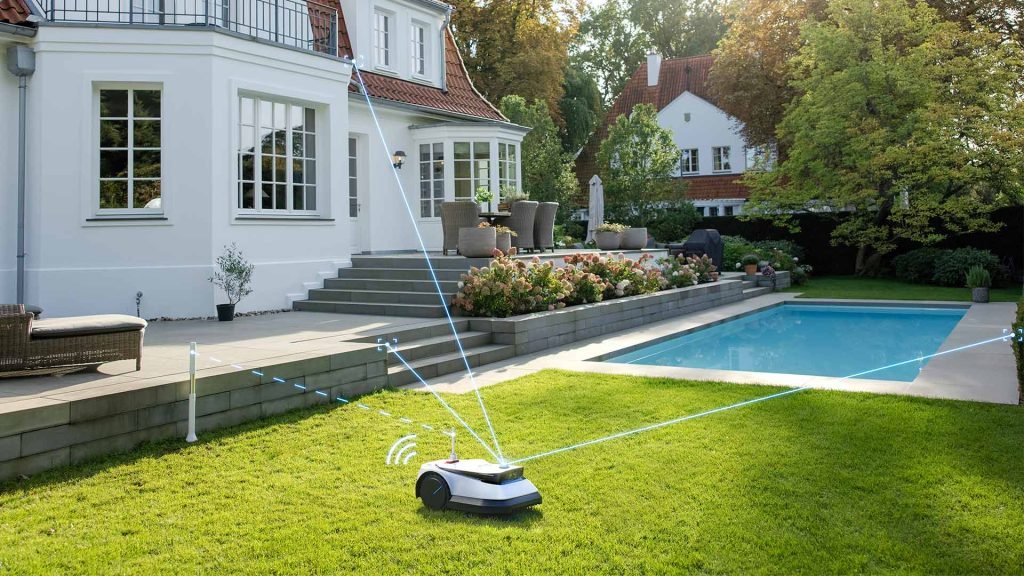
If you want the most reliable system possible, you can’t really beat a guide wire. It works in all situations and all conditions. You’ll also find these models to be cheaper than the other mowers, sometimes by as much as $1,000 or more.
The downside of course is the wire installation. However, you can usually find someone to install it if you truly don’t want to do it yourself. Just make sure to find someone with experience and make sure they can return if you find the mower’s navigation has any issues.
The other navigation systems are for those who like to be on the cutting edge of home technology and home automation. These systems sometimes require a little trial and error to get right. In some cases, like with GPS/RTK, if you can’t get a great signal, they may not work well at all.
However, most of the GPS/RTK mowers and vision-based mowers have additional electronic markers you can place around your lawn to help with navigation and solve any issues. But as mentioned, this means trial and error.
So, depending on who you are and what you want, there should be a robot mower navigation system that works for you. Just decide what you want out of the mower and whether your property is a good match for each different style of navigation technology.

